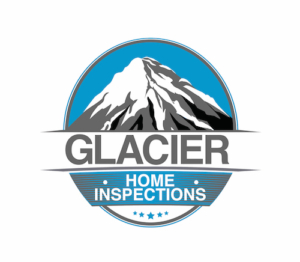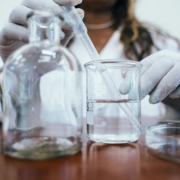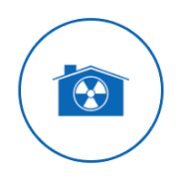Why You Should Test for Mold, Radon, and Meth Residue
When purchasing or selling a home, one of the most critical steps in the process is a comprehensive home inspection. While a standard inspection covers the home’s structural integrity, electrical systems, plumbing, and HVAC, additional testing for mold, radon, and meth residue is just as crucial. These hidden dangers can pose serious health risks and lead to costly remediation if left undetected.
Mold Testing: Protecting Your Health and Home
Mold thrives in damp, humid environments, often growing unnoticed behind walls, under floors, or in attics and basements. While some mold is harmless, toxic mold (such as black mold) can cause serious respiratory problems, allergic reactions, and other health issues.
Why Mold Testing Is Important:
- Health Risks: Prolonged exposure can trigger asthma, allergies, and respiratory infections.
- Structural Damage: Mold weakens walls, flooring, and ceilings, leading to costly repairs.
- Resale Value: Mold issues can lower property value and make selling difficult.
A professional mold inspection can detect hidden growth, pinpoint moisture sources, and recommend proper remediation steps.
Radon Testing: The Silent Killer in Homes
Radon is a colorless, odorless radioactive gas that seeps into homes from the soil. It is the second leading cause of lung cancer after smoking. Radon levels vary by location, but any home can have dangerous concentrations, even if neighboring houses do not.
Why Radon Testing Is Crucial:
- Undetectable Without Testing: You won’t see, smell, or taste radon—testing is the only way to know your home’s levels.
- Serious Health Concerns: Long-term radon exposure is linked to lung cancer, with over 21,000 deaths annually in the U.S. attributed to radon exposure.
- Affordable Mitigation: If high levels are detected, mitigation systems can reduce radon to safe levels.
Testing is simple and inexpensive, making it a small investment for peace of mind.
Meth Residue Testing: Hidden Dangers in Your Home
Methamphetamine production and use can leave behind toxic chemical residues that seep into walls, carpets, and ventilation systems. Even if a home looks clean, past drug activity can create serious health hazards.
Why Meth Residue Testing Is Important:
- Health Risks: Exposure can cause respiratory problems, headaches, dizziness, and long-term neurological issues.
- Costly Remediation: Cleaning up meth contamination can be expensive, often requiring professional decontamination and even replacing walls or flooring.
- Unknown History: Even if the seller isn’t aware of past meth use, the property may have been previously contaminated.
Meth testing is especially important for rental properties, foreclosed homes, or homes in areas with high drug activity.
Conclusion: A Small Investment for Long-Term Safety
Home inspections should go beyond just structural integrity—testing for mold, radon, and meth residue ensures that your home is safe, healthy, and free from hidden dangers. Whether you’re a buyer, seller, or homeowner, investing in these tests can save you money, protect your family, and provide peace of mind.
Before making one of the biggest investments of your life, take the extra step to ensure your home is truly safe. A few tests today could prevent major health risks and financial burdens in the future.
To learn more about testing in Montana see SafeHomeMT.com.
Would you like help finding a qualified home inspector in your area? Let us know and we can help you determine if specific testing makes sense for your potential home purchase. You can call, text or email us, and even use our online scheduler to get in touch.


